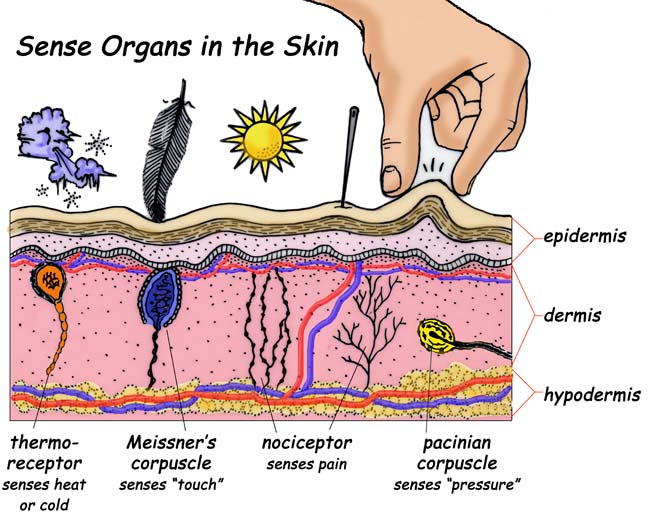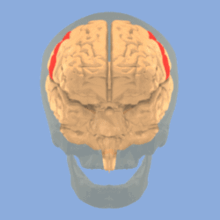The human skin is the biggest organ in our body and is also the biggest sensory organ. It is just as vital sensory organ as our eyes, ears, tongue and nose. Thanks to it, we are both protected to a great extent by harmful influences of the environment, and are able to interact with our surroundings and extract great deal of information, which can be lifesaving. As we now know, the skin turns out to be an incredibly complex organ with a huge amount of specialized substructures like glands, hair buds, all sorts of different nerve endings, and layers with different function. But how exactly is the ticklish sense evolutionary beneficial and if it is – why some of us “die laughing” to the sole thought of being tickled and others don’t seem to be much bothered by it?
Tickling comes from one very specific type of mechanoreceptors in the skin called Meissner corpuscle – they are situated very close to the surface of the skin and are extremely sensitive to light touch and do not respond to harder touch that would elicit any amount of pain. They can detect vibrations as mild as 50Hz, which is about the vibrations produced by the gentle hums we can sometimes hear around electric generators. Everyone with healthy skin has these receptors in different concentrations around their body. With age these receptors gradually lose their sensitivity and die out, which is why elderly people have decreased sensitivity to light touch.

The receptors for light touch transfer the information from the skin to a part of the brain called somatosensory cortex, which processes it. This part of the brain is also the reason why we can’t tickle ourselves – it is able to filter information that is unimportant in order to save energy by processing only the important signals. This means that your brain is very well aware of the sensation it will receive when your own fingers try to tickle you so it chooses simply to not be bothered with responding to this.

Unlike the laughter from hearing a joke or seeing something funny, the laughter from tickling is associated also with another part of the brain – the hypothalamus, which among other things, is responsible for the “fight or flight” reflex. This might be related also to the fact that many of the mechanoreceptors registering the tickling sensation are concentrated in the area of the torso out of the boundaries of the rib-cage – the underarms, the neck, the sides of the stomach area, and areas that happen to have little to no hair. This made some scientists believe that it is by design – those areas are unprotected by the bony structure of the rib-cage but still contain vital organs and often have big blood vessels passing near the skin surface, and hence – need better sensory abilities to predict, sense and deflect dangers. Which is why some people lash so violently even to the prospect of being tickled – as a defensive reflex.
But these findings still don’t explain why do we feel the tickling sensation so strongly and often so differently from each other. May be it is simply because (like in so many other respects) we are all different from each other, and perceive and react to the environment differently. While some scientists believe that tickling is of social importance – it usually makes both people involved laugh, and shows a certain amount of closeness (in general tickling strangers is not pleasurable and is frowned upon ;P ), others think that it is just the limited variation of responses that the brain has in hand to react to different signals and it just happens that laughter ended up being the response also to tickling. In any case research on this is still ongoing and I doubt it will come to a halt until there is still even one person left who laughs when tickled.


That’s interesting, I did not know that. I’m a terrible sufferer of ticklishness and suspect the reason for it is somewhere between the two options you cite. It probably started as strange side effect of how the brain and nerves work but it clearly has positive social implications and therefore has not been selected against; it may even have been heightened if it provides a real benefit. I have absolutely no data to back this up though, it’s pure speculation.
True! As usual, things in our body are rarely there by complete coincidence and people often mistake evolutionary pressure for the lack of thereof in regard to some of our more peculiar traits. I myself am incredibly ticklish and it got me wondering – “why here and not there” and “why me and not my brother for example”. It’s fascinating how the brain works esp if it’s cros-comminicating info with other organs! 🙂